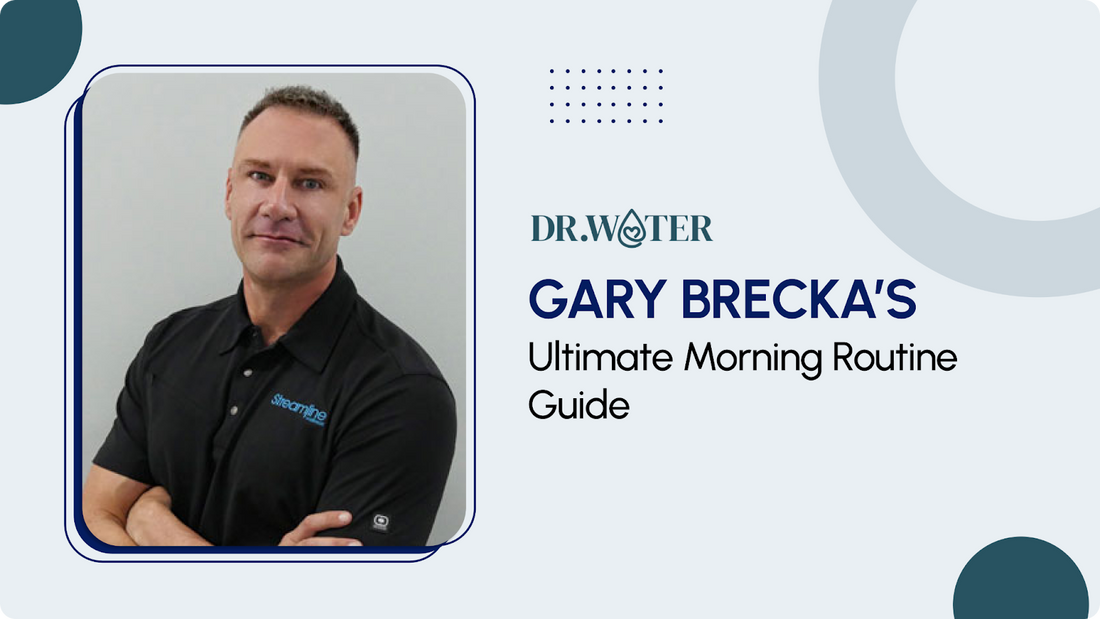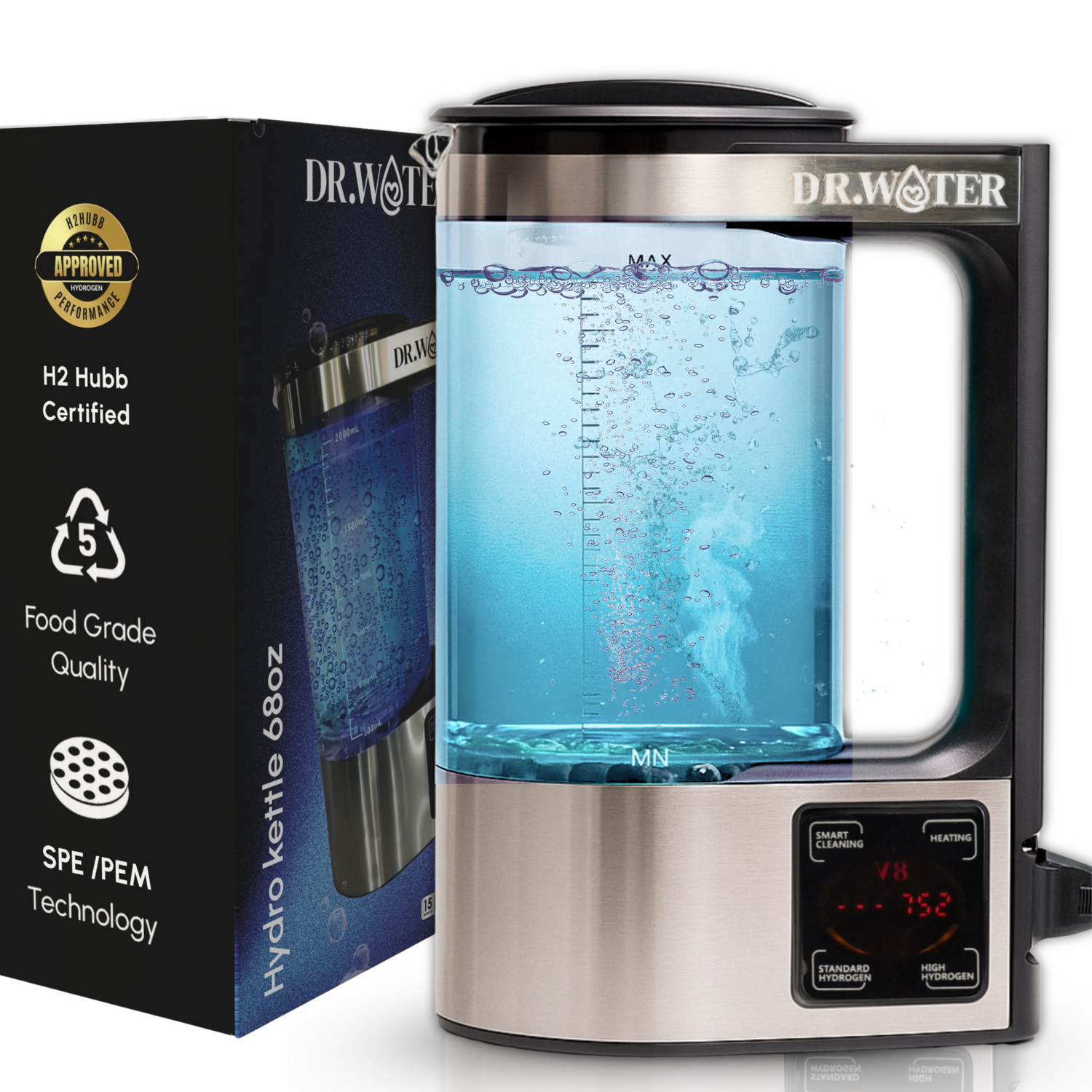
Gary Brecka's Ultimate Morning Routine Guide
Share
Summary
|
Gary Brecka is a human biologist and longevity expert who champions the “30‑30‑30” morning protocol. 30g of protein within 30 minutes of waking, followed by 30 minutes of gentle cardio.
That protein‑then‑cardio approach is linked to better blood sugar control, metabolism, and insulin sensitivity, key metrics tracked by healthcare authorities.
Yet Brecka’s morning routinely expands far beyond the 30‑30‑30 rule. He begins hydration with mineral or hydrogenated water. He then adds morning sunlight, grounding, breath‑work, cold shower, and light movement, biostacking multiple steps into his first hour outdoors.
Each step is deliberate, aimed at influencing key markers, including cortisol, glucose, and inflammation. To understand why he stacks them this way, let’s first view his mornings as a reset, not a routine.
How Brecka Treats Mornings as a Biochemical Reset (Not a Productivity Hack)

Credit: instagram.com
Gary Brecka doesn't treat mornings as a time to cram tasks. He treats them as a chance to reset internal systems before external inputs take over. According to him, the first hour after waking is when hormonal and metabolic rhythms are most responsive and open to reset.
He uses this first hour not to chase productivity but to correct overnight imbalances. That starts with how he responds to three key hormonal shifts:
- Cortisol peaks shortly after waking. Brecka boosts this with natural light and cold exposure. That strengthens stress-response systems and primes energy levels.
- Melatonin suppression through daylight helps reset circadian rhythms. This improves alertness and sleep quality over time.
- Glucose sensitivity is higher in the morning. Protein and light movement then help stabilise blood sugar before eating.
This whole routine depends on biology, not productivity theory. It’s not about getting more done; it’s about lowering friction between your body and your environment from the moment you wake up.
This reset framework shapes everything Brecka does once he wakes up. Here's how he applies it through seven specific steps.
How Gary Brecka Structures His Mornings Step by Step

This Morning Routine Will Supercharge Your Energy Levels! | TUH #136
Gary Brecka treats his mornings as a biochemical protocol, rather than a mindset practice or a time-management tool. Each step follows a fixed order and targets a distinct physiological trigger. The sequence below reflects how that protocol plays out in exact terms.
1. Wakes Naturally Without Input or Distraction
No alarms. No notifications. Brecka wakes between 5 and 6 a.m., letting his internal clock do the work. For the first stretch of the day, there's zero interaction, no screens, media, or small talk. He considers this essential to avoid hijacking his nervous system before his first biological reset.
2. Takes a Mineral Shot Before Anything Else

His first intake is filtered water with lemon and Himalayan salt. On days when he’s dehydrated or just traveled, he adds hydrogen-rich water.
A product like Dr. Water’s hydrogen water bottle supports this kind of hydration without artificial additives. The focus here is on replenishing minerals that help cells absorb water and maintain the body’s signals in optimal condition. No food, coffee, or supplements come before this step.
Also Read: Benefits of Drinking Hydrogen Water: A Simple Guide
3. Gets Direct Sunlight Within 10-15 Minutes

Once hydrated, he steps outside without sunglasses, barrier glass, or delay. This light exposure suppresses melatonin and activates early cortisol, triggering gene-level regulation of the circadian rhythm. He avoids multitasking here. No walking, grounding, or stretching - just still, unfiltered light for 10 to 20 minutes at most.
4. Does Breathwork and Speak Gratitude Aloud
Next, he performs one to two minutes of slow, nasal breathing, typically using the Wim Hof method or the 4-7-8 technique. Right after, he speaks one sentence of gratitude out loud. No journaling. No affirmations. No silence. He uses this as a way to calm the nervous system and bring vocal tone into balance at the start of the day.
5. Cold Water Exposure for a Few Minute

The cold plunge or cold shower follows with no pause. Duration stays between 1-3 minutes, long enough to spike norepinephrine and restore vascular tone. Brecka doesn’t use this for mental toughness. He uses it to flip a biochemical switch that supports clarity without relying on stimulants.
6. Delays Caffeine, Prioritizes Protein
Coffee waits. At least 90 minutes pass before the first sip is taken. Instead, he consumes 30g of protein, whey isolate, eggs, or collagen. The timing aims to capitalize on high insulin sensitivity and offset cortisol’s natural dip. This also blunts mid-morning crashes tied to poor glucose handling.
7. Takes Morning Supplements Based on Lab Results

Only after food comes supplementation. Typical inclusions are omega-3, D3, and DHEA, each selected through lab testing, not habit. Brecka avoids blanket advice on supplements, calling it blind biohacking. Everything is dose-matched, not self-prescribed, and never taken on an empty stomach.
Each action is timed, isolated, and done for a reason. Skipping or rearranging parts, he says, leaves effects by midday. The power lies in the order, not just the elements.
Also Read: Joe Rogan and Hydrogen Water Health Advice
However, even a structured routine like this isn’t set in stone. Brecka reads signals, both inside and out, and adjusts the inputs as needed. The reasons aren’t random. They follow patterns tied to data.
When and Why Brecka Adjusts His Routine
Gary Brecka doesn’t treat his morning routine as set in stone. It works as a baseline, but only when his body is in balance. When that shifts, so does the routine. The signals come from two sources: blood test markers and daily recovery cues. They’re data points he tracks and responds to directly.
Blood markers guide long-term changes. For instance:
- If vitamin D levels drop, he increases his early morning sunlight exposure.
- If inflammatory markers, such as CRP, are elevated, he’ll reduce cold exposure or adjust supplement timing.
- If nutrient levels show a gap, such as omega-3 or magnesium, he adjusts what goes in before meals.
Sleep and mood drive short-term shifts:
- A poor sleep score leads him to skip intense breathwork or reduce physical movement.
- High stress? He might leave out the cold plunge entirely and focus on protein or grounding routines instead.
These changes aren't random or mood-based. If the markers are stable and his recovery is expected, the routine stays the same. It’s not about tweaking for variety. It’s about removing friction and responding to what his body signals, nothing more.
Conclusion
This routine isn’t built for copying all at once. Brecka started with two or three steps, measured how they affected his energy, mood, and recovery, and only then added more.
His method works because it’s controlled. Each input has a reason and a place. Swapping steps or piling on new tools interrupts the sequence. The more random the mix, the less stable the effect.
That same logic applies to hydration. Brecka doesn’t just drink more water; he uses hydrogen-rich water selectively, especially after travel or poor recovery. For those looking to add that step without overhauling the rest, Dr. Water’s hydrogen water bottle offers a clean, stable option.
Hydrate Smarter - Begin with Dr. Water Now!
Start with better hydration - Try Dr. Water Today!
FAQs
Q: Can this routine work without early waking or full outdoor access?
A: Yes, but timing and light exposure are central to Brecka’s method. If you wake up later or live in low-light environments, simulate natural light by using red or full-spectrum lamps within 15 minutes of waking. The key is mimicking the body’s natural hormonal triggers.
Q: Is hydrogen water safe to drink daily?
A: Hydrogen-rich water is generally safe for daily use. Brecka doesn’t overuse it; he adds it situationally, such as after flying or intense exertion. As with any intervention, it should support, rather than replace, core hydration and mineral balance.
Q: Why doesn’t Brecka combine multiple steps at once, like sun, grounding, and movement?
A: His protocol separates actions to track their effects. Combining inputs, like breathwork during grounding or cold exposure while sunbathing, adds too many variables. He isolates them to understand better which input is creating which change.
Q: How does Brecka know if a new step is helping or hurting?
A: He doesn’t rely on mood alone. He examines metrics, including glucose response, sleep score, inflammation markers, and recovery rate. If something disrupts those patterns consistently, it’s adjusted or removed, even if it feels good in the moment.
Q: Why does Brecka delay caffeine even though many people start their day with it?
A: He waits at least 90 minutes after waking because early caffeine spikes cortisol and blunts natural energy rhythms. Delaying it helps his body complete its hormonal wake-up process before adding any stimulants. This also reduces mid-morning crashes.

